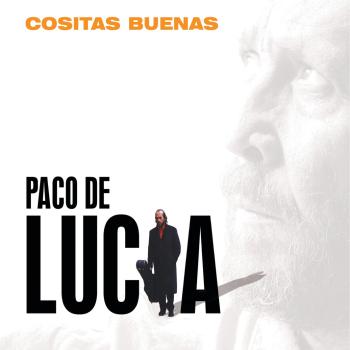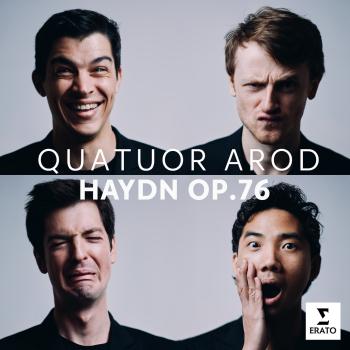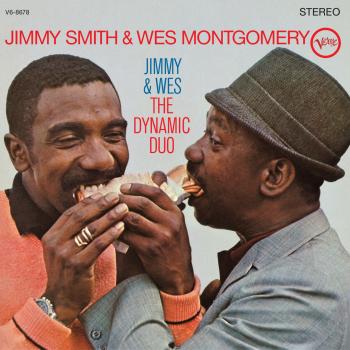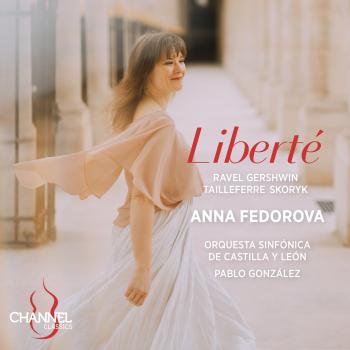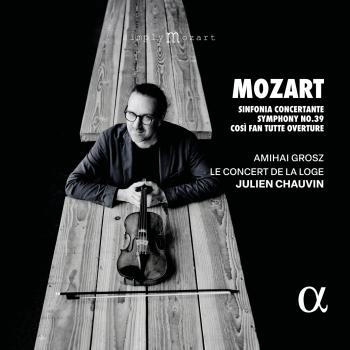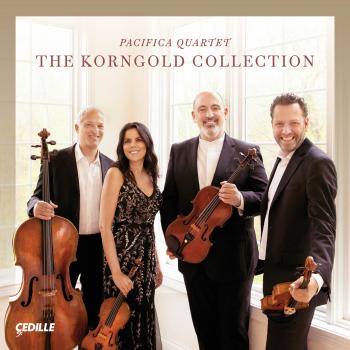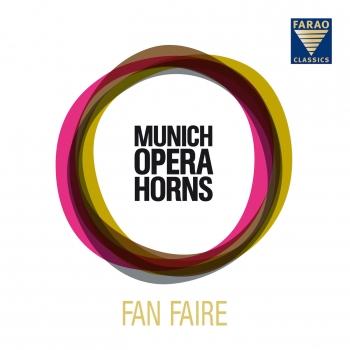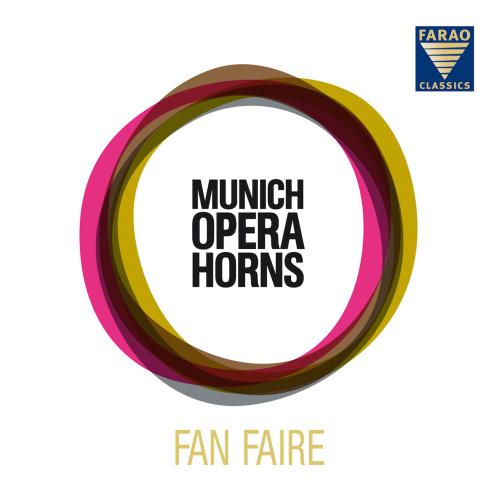
Fan Faire Munich Opera Horns & Christopher Ward
Album info
Album-Release:
2013
HRA-Release:
17.02.2015
Album including Album cover Booklet (PDF)
- Richard Wagner (1913-1883): Lohengrin Fantasie
- 1 Lohengrin Fantasie 12:13
- Johann Sebastian Bach (1685-1750): Heiden Heiland
- 2 Nun komm der Heiden Heiland BWV 61 04:21
- Giovanni Gabrieli (1557-1612): Canzon per sonar septimi toni
- 3 Canzon per sonar septimi toni 03:17
- Johann Sebastian Bach (1685-1750): Wachet auf
- 4 Wachet auf ruft uns die Stimme BWV 140 04:52
- Miroslav Srnka
- 5 Fan Faire 07:36
- Johann Sebastian Bach (1685-1750): Schmücke Dich
- 6 Schmücke Dich o liebe Seele BWV 180 05:21
- Giuseppe Verdi (1813–1901): Triumphmarsch und Ballettmusik aus AIDA
- 7 Triumphmarsch und Ballettmusik aus AIDA 05:21
- Astor Piazzolla (1921-1992): Oblivion
- 8 Oblivion 05:07
Info for Fan Faire
Robert Schumann once said: “The horns are the soul of the orchestra.” And the horn really is more than just an instrument. However, the full dimensions of its immense versatility are revealed only when a horn is not played alone, but when nine horns experiment simultaneously with their sound, exploring their furthest creative limits and communicating with one another.
The “medley” of the most beautiful passages from “Lohengrin” shows all the tonal capabilities of the horn to best advantage. In Piazzolla's tango classic “Oblivion”, the sound of the bandoneon is deliberately imitated, while in Gabrieli's “Canzon”, two quartets mutually pose and answer questions. In his Bach arrangements, Franz Kanefzky, hornist in the Munich Radio Orchestra, focuses on the subdued, intimate expressive possibilities of the horn, while with Verdi, the mighty “Aida” horns come into play. The hornists even once remove the bells from their instruments to gain the full effect for Verdi's impressive fanfare sound. Srnka's “splendid blowing” (as the hornists call it) features quarter tones and all kinds of technical effects.
Munich Opera Horns
Christopher Ward, conductor
Munich Opera Horns
It is no great secret that the horn section in an orchestra is the group with the most zest for life. This basic principle also implies that horn players have a strong sense of tradition, yet at the same are always eager to go down new, enterprising paths.
When the »Munich Opera Horns« were founded in 2007, its members wanted to breathe new life into the traditions of their ensemble and evolve new, equally important forms of playing above and beyond the everyday opera routine.
The horn tradition of the Munich orchestra goes back a long way: the first hornists were perma- nently employed in the Bavarian Hofkapelle by Elector Max Emanuel II as early as 1706. Since then, the orchestra has inspired enthusiasm in many great composers; Richard Wagner and Richard Strauss became »household deities«. The horns developed their own unmistakeable sound, a high degree of cultivation with plenty of bite, a singing style and a precise attack.
The »Munich Opera Horns« uphold these ideals to this day. Their first recording – Robert Schumann‘s Concert Piece (Konzertstück) for Four Horns with Kent Nagano and the Bavarian State Orchestra (FARAO classics) – was met with much critical acclaim. Since then, the ensemble has worked on extending its repertoire and tonal scope. It has commissioned new arrangements of pieces from Bach to Piazzolla and has particularly intense working relationships with the hornist and composer Franz Kanefzky and the contemporary composer Miroslav Srnka, who specifically tailored his composition »Fan Faire« to suit the »Munich Opera Horns«.
The work of the »Munich Opera Horns« is informed by the equal status given to all the parts and the enthusiasm shared by its members for different styles of music. In the »Munich Opera Horns«, Upper Bavarians play with Lower Bavarians, alongside an Australian and a French hornist. Johannes Dengler, Franz Draxinger, Rainer Schmitz, Milena Viotti, Wolfram Sirotek, Maximilian Hochwimmer, Christian Loferer, Stefan Böhning and Casey Rippon constantly change roles and work together to achieve the ideal sound of the ensemble. Their work between rehearsals and performances is also reflected in the overall sound of the orchestra.
Booklet for Fan Faire



